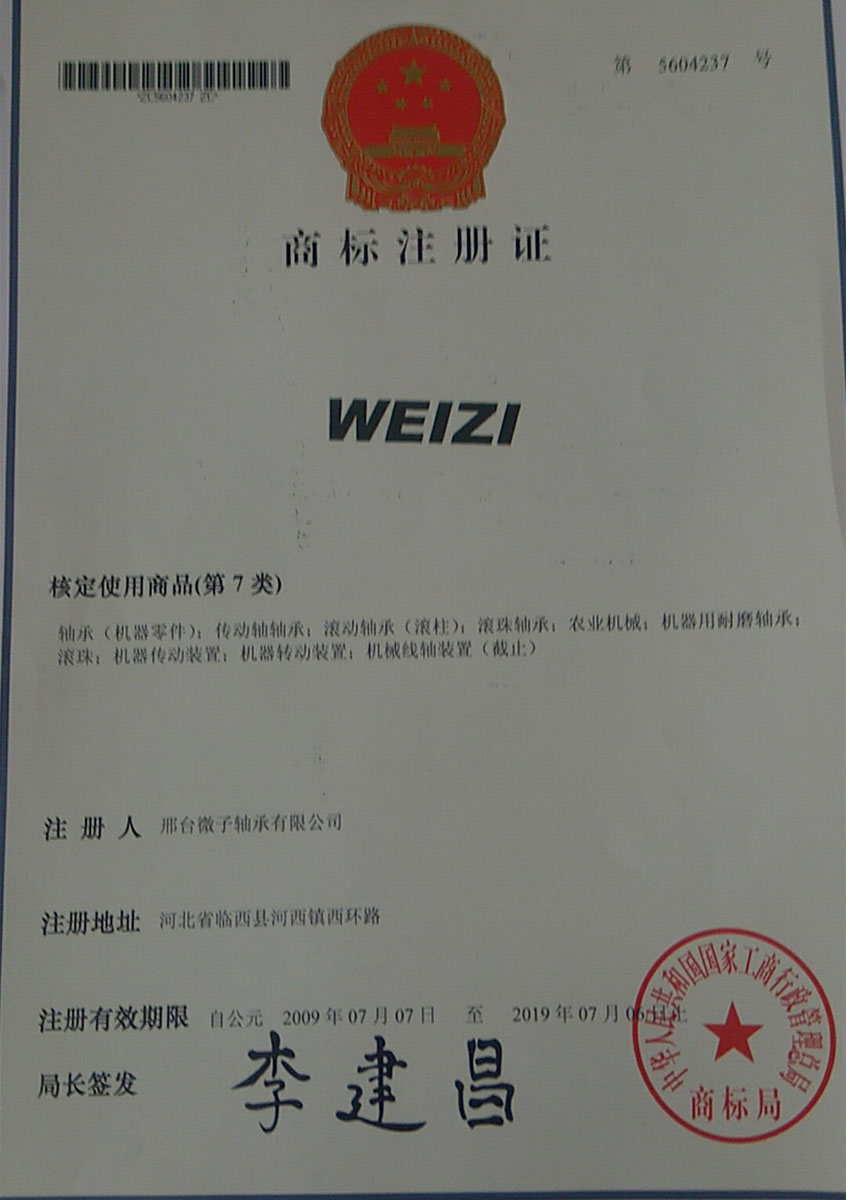
Nov . 17, 2024 19:54 Back to list
thrust ball bearing 51105
Understanding Thrust Ball Bearing 51105 Design, Function, and Applications
Thrust ball bearings are crucial components in numerous mechanical systems, enabling smooth rotation while managing axial loads. Among the various types available, the thrust ball bearing 51105 stands out due to its unique design and reliability in high-load applications. This article delves into the design, function, and applications of the thrust ball bearing 51105, providing a comprehensive overview for those interested in mechanical engineering.
Design Characteristics
The thrust ball bearing 51105 is designed to accommodate axial loads in one direction. It consists of two grooved races and a ball complement that is separated by a cage. This design allows for efficient distribution of the load across the balls and minimizes friction during operation. The bearing is typically made from high-quality alloy steel, which enhances its strength and provides resistance against wear and fatigue.
One notable aspect of the 51105 design is its dimensions. The bearing has an inner diameter of 25 mm, an outer diameter of 42 mm, and a width or height of 13 mm. This compact size makes it ideal for applications where space is at a premium. The specific geometry of the balls and races in the 51105 is optimized to ensure that the bearing can handle substantial axial loads while maintaining performance over extended periods.
Functionality
The primary function of the thrust ball bearing 51105 is to support axial loads, which are forces acting parallel to the shaft axis. Unlike radial ball bearings, which handle loads perpendicular to the axis, thrust bearings are specifically engineered to manage thrust force in one direction. This ability to handle axial loads efficiently makes the 51105 suitable for various applications, especially in scenarios where rotational motion is coupled with significant axial forces.
The bearing's design facilitates smooth movement, reducing friction and heat generation. As a result, the 51105 can enhance the overall performance and lifespan of machinery by minimizing wear and energy consumption. Furthermore, the cage that separates the balls also plays a vital role in ensuring optimal spacing, which further reduces the risk of contact and wear among the balls.
Applications
thrust ball bearing 51105

Thrust ball bearings like the 51105 are commonly used in a multitude of applications across different industries
. Their ability to handle axial loads makes them a favored choice in machinery where the direction of force is well-defined. Common applications include1. Automotive In various automotive components, thrust bearings support parts like clutches and gear mechanisms, where axial forces are prevalent.
2. Industrial Machinery Equipment such as presses and lathes often utilize thrust ball bearings to stabilize moving parts and facilitate precise operations.
3. Robotics In robotic arms and manipulators, thrust bearings help manage the loads experienced during movement, enabling efficient operation.
4. Home Appliances Many household appliances, such as washing machines and dishwashers, employ thrust ball bearings to allow smooth rotation of components subjected to axial forces.
5. Aerospace In the aerospace sector, thrust ball bearings are critical for applications such as turbine engines and rotor assemblies, where precise control of axial loads is essential for safety and efficiency.
Conclusion
The thrust ball bearing 51105 is a vital component in various mechanical systems due to its robust design and capacity to manage axial loads effectively. Its applications span multiple industries, from automotive to robotics, highlighting its versatility and importance in modern engineering. Understanding the functionality and benefits of bearings like the 51105 can help engineers and designers make informed decisions about component selection, leading to improved performance and longevity of machinery. As technology continues to advance, the role of thrust ball bearings will remain integral to the development of more efficient and reliable mechanical systems.
Latest news
-
Industrial Machine Bearings: the core hub of mechanical operation
NewsAug.06,2025
-
Deep Groove Ball Bearing: A Dynamic "Elf" Operating Mechanically
NewsAug.06,2025
-
Compact craftsmanship: the way to optimize the space of Concrete Mixer Bearings
NewsAug.06,2025
-
Combine Harvester Bearings: The 'Steel Backbone' of Modern Agriculture
NewsAug.06,2025
-
Bearing Machinery: a flexible support hub for mechanical operation
NewsAug.06,2025
-
Agricultural Equipment Bearings: A Power Hub for Intensive Cultivation under Radial Space Constraints
NewsAug.06,2025
